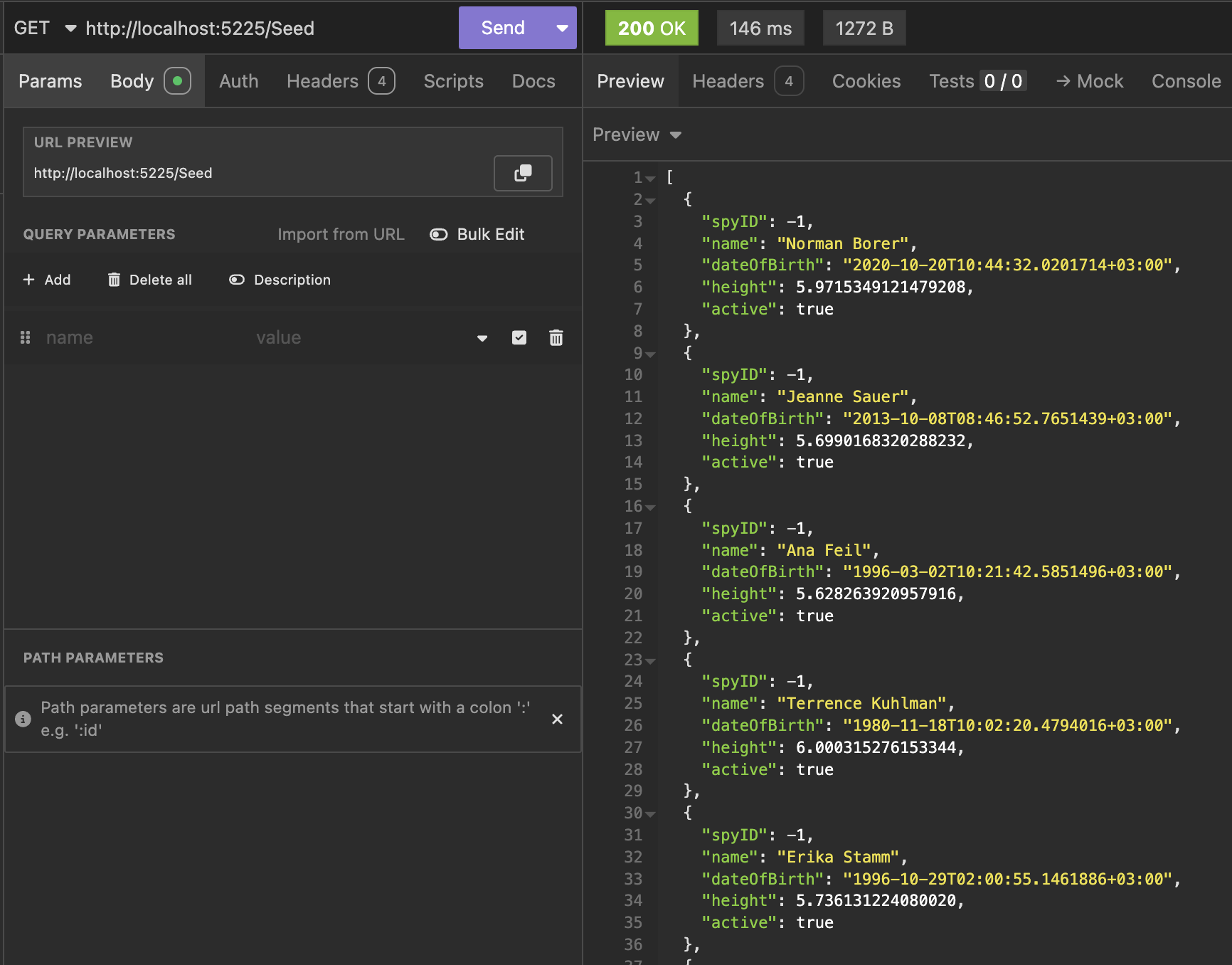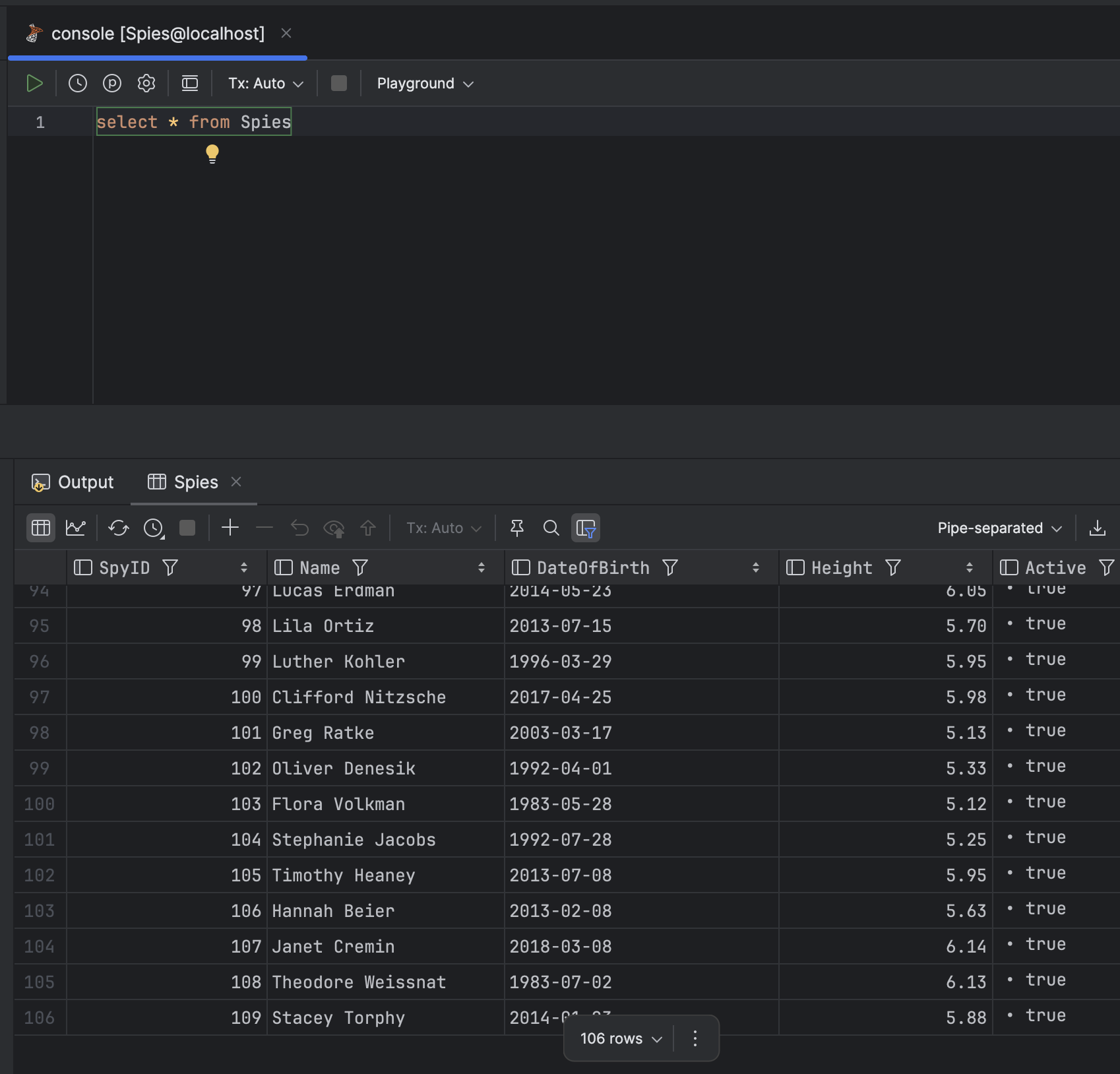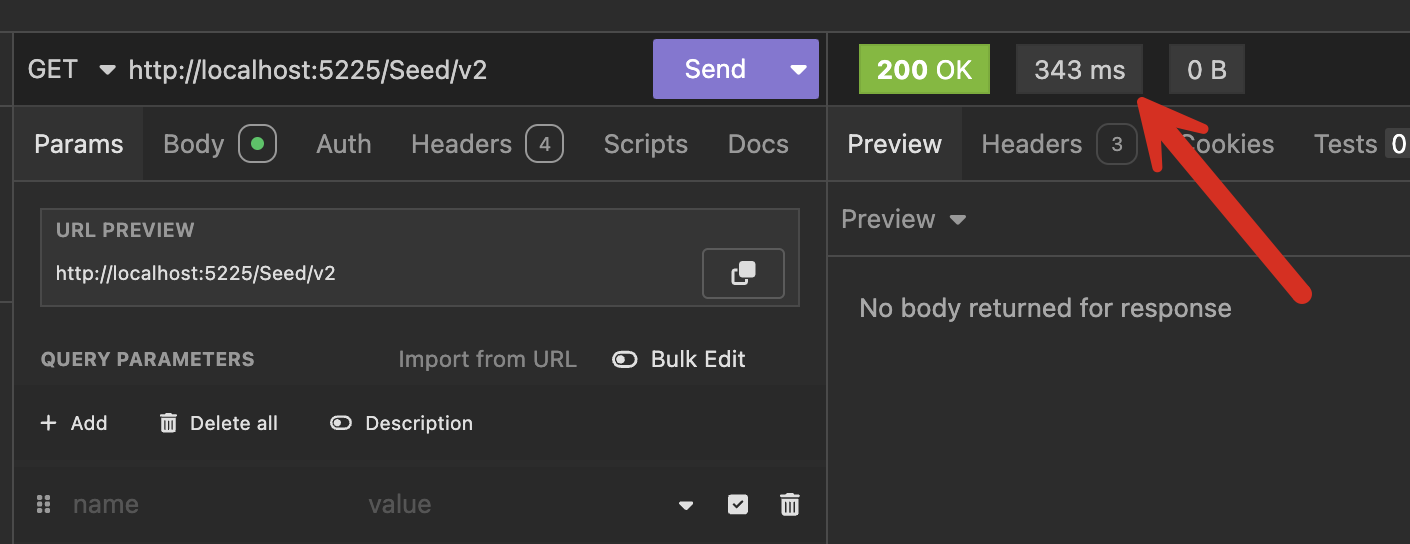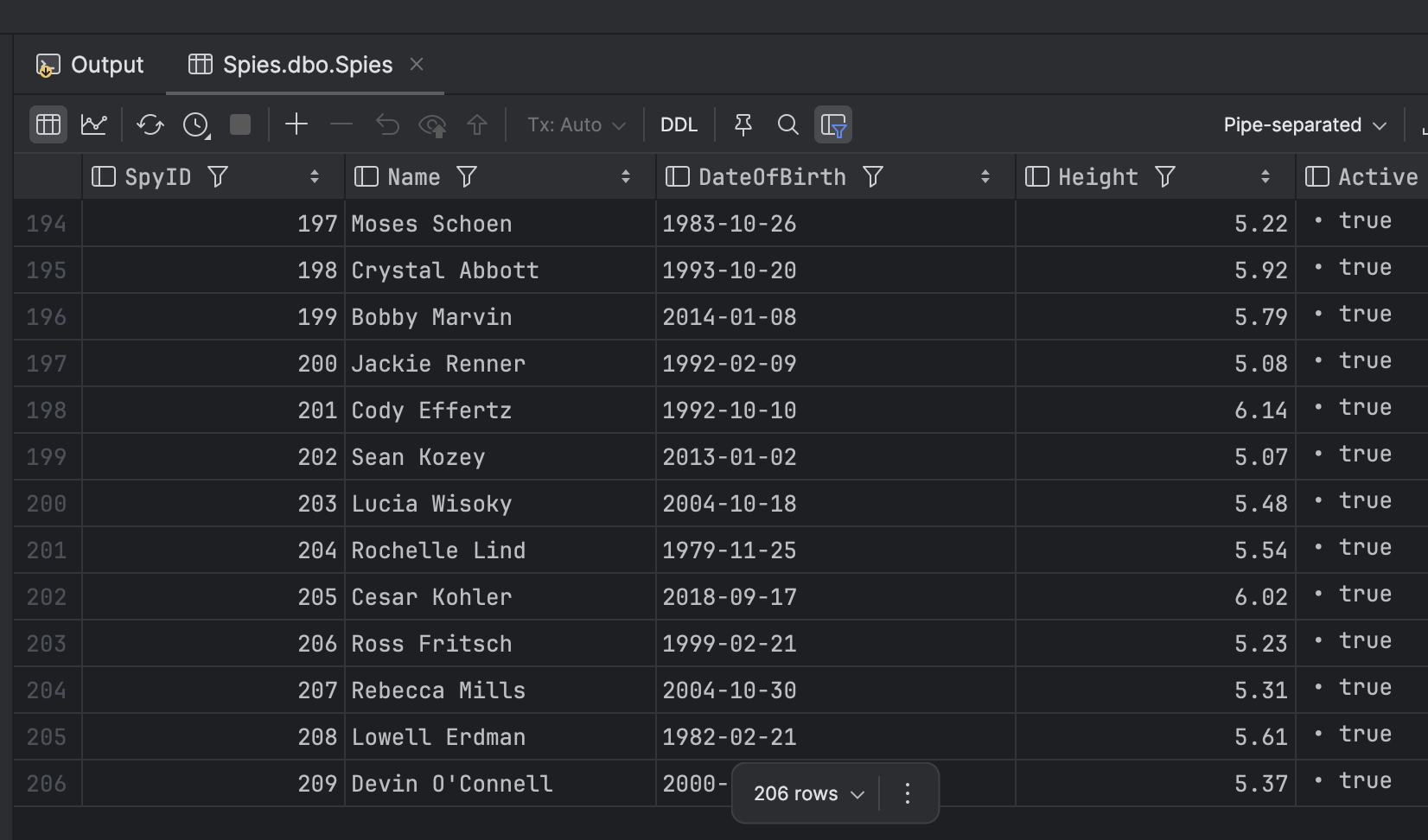Dapper Part 5 - Passing Data In Bulk To The Database
[C#, .NET, Dapper, Database]
This is Part 5 of a series on using Dapper to simplify data access with ADO.NET
- Simpler .NET Data Access With Dapper - Part 1
- Dapper Part 2 - Querying The Database
- Dapper Part 3 - Executing Queries
- Dapper Part 4 - Passing Data To And From The Database
- Dapper Part 5 - Passing Data In Bulk To The Database (This Post)
- Dapper Part 6 - Returning Multiple Sets Of Results
- Dapper Part 7 - Adding DateOnly & TimeOnly Support
- Dapper Part 8 - Controlling Database Timeouts
- Dapper Part 9 - Using Dynamic Types
- Dapper Part 10 - Handling Cancellations
- Dapper Part 11 - Using Inheritance
- Dapper Part 12 - Alternative Bulk Insert Technique
- Dapper Part 13 - Using Transactions
- Dapper Part 14 - Multithreading
- Dapper Part 15 - Using The IN Clause
- Dapper Part 16 - Consideration When Passing Parameters
In our last post, we looked at how to pass data to and from the database using input parameters, output parameters, and calling functions.
Today, we will tackle the problem of how to pass data to the database in bulk.
We want to add functionality to add a Spy.
This is the definition of the type:
public sealed class Spy
{
// Unlike the other properties, this is mutable
public int SpyID { get; set; }
public required string Name { get; init; }
public required DateTime DateOfBirth { get; init; }
public required decimal Height { get; init; }
public required bool Active { get; init; }
}
We also have several applications interfacing with the Spies database, and we want to harmonize the logic. So, we are going to use a stored procedure for this.
CREATE PROC dbo.[Spies.Create]
@Name NVARCHAR(100),
@DateOfBirth DATE,
@Height DECIMAL(3, 2),
@Active BIT,
@SpyID INT OUTPUT
AS
BEGIN
INSERT INTO dbo.Spies
(
Name,
DateOfBirth,
Height,
Active
)
VALUES
(
@Name, @DateOfBirth, @Height, @Active
);
SET @SpyID = scope_identity()
END;
Let us assume we have the following end-point that allows us to insert a new Spy.
app.MapPost("/Spy/", async (SqlConnection cn, Spy spy) =>
{
var param = new DynamicParameters();
param.Add("Name", spy.Name);
param.Add("DateOfBirth", spy.DateOfBirth);
param.Add("Height", spy.Height);
param.Add("Active", spy.Active);
param.Add("SpyID", dbType: DbType.Int32, direction: ParameterDirection.Output);
await cn.ExecuteAsync("[Spies.Create]", param);
// Capture the new SpyID from the output parameter
var newID = param.Get<int>("SpyID");
// Set it in our Spy object
spy.SpyID = newID;
// Return a 201 with the spy in the body
return Results.Created($"/Spy/{newID}", spy);
});
This example also demonstrates one of the practical uses of an output parameter - to capture the newly inserted primary key - SpyID.
This endpoint will create a Spy and then return an HTTP 201. with the newly created Spy in the response.
Finally, we have an endpoint to view a Spy.
app.MapGet("/Spy/{id:int}", async (SqlConnection cn, int id) =>
{
const string query = """
SELECT
Spies.SpyID,
Spies.Name,
Spies.DateOfBirth,
Spies.Height,
Spies.Active
FROM
dbo.Spies WHERE SpyID = @SpyID;
""";
var param = new DynamicParameters();
param.Add("SpyID", id);
var spy = await cn.QuerySingleOrDefaultAsync<Spy>(query, param);
if (spy == null)
return Results.NotFound();
return Results.Ok(spy);
});
Next, we submit a test payload to our endpoint as a POST request.
{
"name": "Evelyn Salt",
"dateOfBirth": "1980-01-01T00:00:00",
"height": 5.90,
"active": true
}
We should get the following response:

So far, so good.
Now, suppose we need to insert 100 spies together. Perhaps we are seeding our new agency.
Let us create an endpoint for this.
To generate our Spies, we are going to use the Bogus package.
dotnet add package Bogus
Next, we will build an endpoint to generate 10 Spy objects, specifying the rules for object creation:
app.MapGet("/Seed", (SqlConnection cn) =>
{
// Create a faker object
var faker = new Faker<Spy>();
//
// Configure our faker
//
// SpyID should always be -1, because the DB is generating them
faker.RuleFor(x => x.SpyID, -1);
// Generate realistic names
faker.RuleFor(x => x.Name, f => f.Person.FullName);
// Date of birth should be random date in the past, max 50 years go
faker.RuleFor(x => x.DateOfBirth, y => y.Date.Past(50));
// Active should always be true
faker.RuleFor(x => x.Active, true);
// Height should be between 5 feet and 6'2
faker.RuleFor(x => x.Height, y => y.Random.Decimal(5.0M, 6.2M));
// Generate 10 spies and print to screen
var spies = faker.Generate(10);
return Results.Ok(spies);
});
If we run our endpoint, we should see the following:

Now, back to our problem.
We want to insert 100 Spy entities.
We can generate the 100 Spy entities in a loop, call our stored procedure, and pass it the parameters.
// Generate our spies
var spies = faker.Generate(100);
// Loop through the collection and insert
foreach (var spy in spies)
{
// Populate our parameters
var param = new DynamicParameters();
param.Add("Name", spy.Name);
param.Add("DateOfBirth", spy.DateOfBirth);
param.Add("Height", spy.Height);
param.Add("Active", spy.Active);
param.Add("SpyID", dbType: DbType.Int32, direction: ParameterDirection.Output);
// Execute the query
await cn.ExecuteAsync("[Spies.Create]", param);
}
Once we run the endpoint, we can query the database.

It works.
And if we look at how long the endpoint took:

487 milliseconds is pretty fast.
So, if it worked, and it was fast, what is the problem?
The problem here is we have
- Created a connection to the database,
- Passed parameters to it
- Executed a database query
- Closed the connection
- Disconnected
100 times.
This is not efficient.
Suppose it were possible to run just one query and achieve the same thing.
This is possible, but it requires a bit of out-of-the-box thinking.
Wouldn’t it be nice if the database supported types?
It does. Remember that the table definition maps to our type.
Wouldn’t it be nice if the database supported a collection of types?
It does. Remember what a table is - a collection of entities.
Can we pass a collection of types to our database?
Yes.
In SQL Server, we define a user-defined table type.
Like this:
CREATE TYPE Spy AS TABLE
(
Name NVARCHAR(100) NOT NULL
UNIQUE,
DateOfBirth DATE NOT NULL,
Height DECIMAL(3, 2) NOT NULL,
Active BIT NOT NULL
);
GO
We then create a stored procedure that we will use to submit our table.
CREATE OR ALTER PROC [Spies.BulkCreate] @Spies Spy READONLY
AS
BEGIN
INSERT dbo.Spies
(
Name,
DateOfBirth,
Height,
Active
)
SELECT
[@Spies].Name,
[@Spies].DateOfBirth,
[@Spies].Height,
[@Spies].Active
FROM
@Spies;
END;
Note the definition of the parameter here:
@Spies Spy READONLY
Spy is what we created earlier, and you must use the READONLY keyword when defining the parameter.
We can see our procedure simply does a SELECT from our parameter table into the actual table, inserting all the rows at once.
Now, we need to do some work on our endpoint.
We need to create a DataTable object with column definitions that map to our user-defined table type.
We then create as many data rows as necessary, which we will then submit to the database as a table-valued parameter.
Our new endpoint looks like this:
app.MapGet("/Seed/v2", async (SqlConnection cn) =>
{
// Create a faker object
var faker = new Faker<Spy>();
//
// Configure our faker
//
// SpyID should always be -1, because the DB is generating them
faker.RuleFor(x => x.SpyID, -1);
// Generate realistic names
faker.RuleFor(x => x.Name, f => f.Person.FullName);
// Date of birth should be random date in the past, max 50 years go
faker.RuleFor(x => x.DateOfBirth, y => y.Date.Past(50));
// Active should always be true
faker.RuleFor(x => x.Active, true);
// Height should be between 5 feet and 6'2
faker.RuleFor(x => x.Height, y => y.Random.Decimal(5.0M, 6.2M));
// Generate our spies
var spies = faker.Generate(100);
// Create a datatable
var dt = new DataTable();
// Add columns
dt.Columns.Add("Name", typeof(string));
dt.Columns.Add("DateOfBirth", typeof(DateTime));
dt.Columns.Add("Height", typeof(decimal));
dt.Columns.Add("Active", typeof(bool));
// Loop through the collection, create a datarow,
// populate it with data and add it to he rows
// collection of the datatable
foreach (var spy in spies)
{
var row = dt.NewRow();
row["Name"] = spy.Name;
row["DateOfBirth"] = spy.DateOfBirth;
row["Height"] = spy.Height;
row["Active"] = spy.Active;
dt.Rows.Add(row);
}
// Populate our parameters
var param = new DynamicParameters();
// Call dapper method that converts a datatable to a table valued parameter
param.Add("Spies", dt.AsTableValuedParameter());
// Execute the query
await cn.ExecuteAsync("[Spies.BulkCreate]", param);
return Results.Ok();
});
If we run our endpoint:

It is slightly faster than the previous version. The more complex the type and the more the rows, the better the relative performance should be. But the main benefit is that we hit the database once.
We can see our new rows have been inserted.

There are several ways to tackle this problem, one of which is Bulk Inserting. Depending on your circumstances and data, this might be a better solution. I will write a post on that later this month.
TLDR
Table-valued parameters allow you to submit data in bulk to your database engine.
The code is in my GitHub.
Happy hacking!